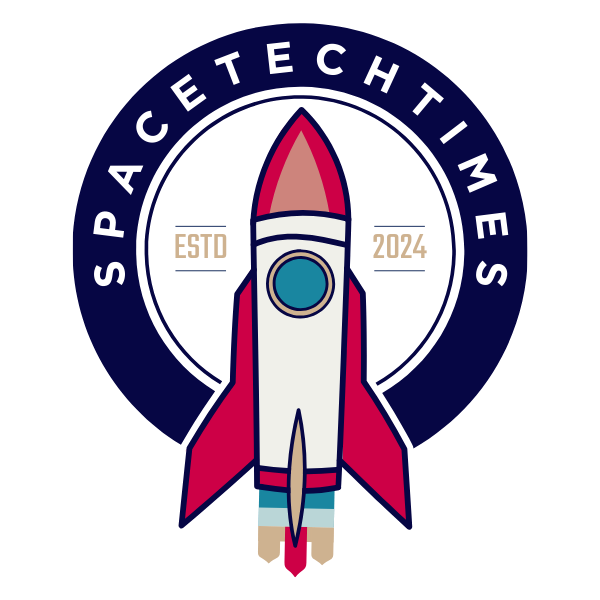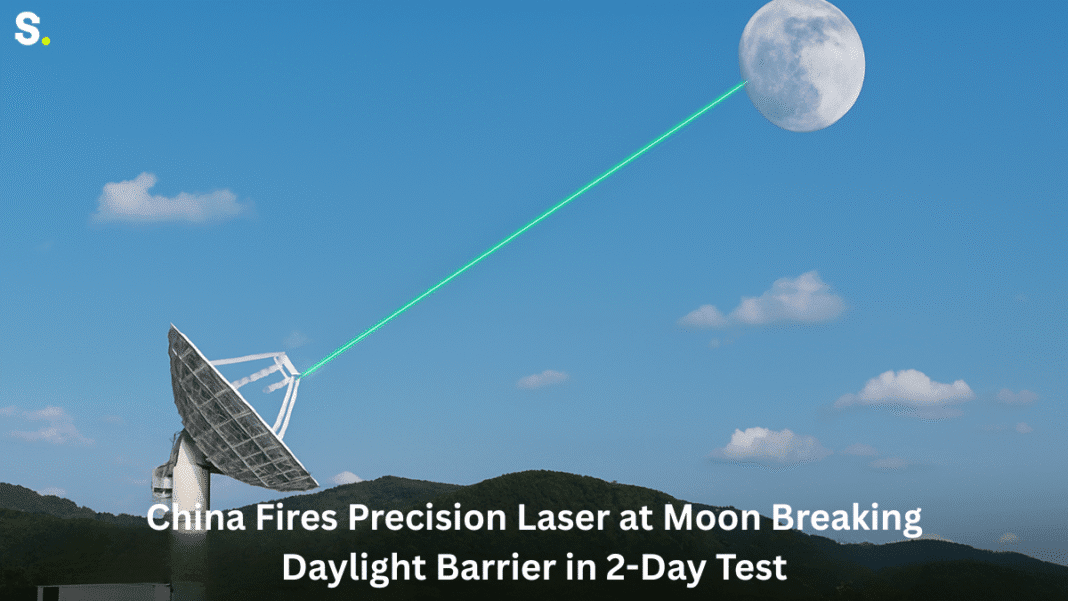In an achievement never seen before, China has managed to do something that scientists across the world have been trying to solve for decades—send a laser beam all the way to the Moon and receive a signal back during the day.
Daylight Laser Beam Reaches the Moon for the First Time
This difficult experiment was completed by scientists from China between April 26 and 27, 2025. What made it so special was that it was done in full daylight, a time when the Sun’s brightness usually makes this kind of task almost impossible.
The experiment was part of China’s deep space exploration program and involved a satellite called Tiandu-1. This satellite is one of three in China’s Earth-Moon communication plan. The laser beam traveled 130,000 kilometers (about 80,778 miles) from Earth to the Moon. That is roughly one-third of the way to Mars. Not only did the laser reach the Moon, but it also bounced back successfully, carrying precise data.
Until now, laser signals sent to the Moon worked only at night because the Sun’s light during the day caused too much noise. The light from the Sun interferes with the laser signals, making it hard to aim and receive clear results. But this time, scientists overcame that problem. It was like trying to hit a hair-thin target from 10 kilometers away, while the target was moving—and still getting a perfect result.
Orbit at Breaking Point! China’s Satellite Expansion Threatens Global Space Stability
How the Laser System Works and Why It Matters
The method used is called Satellite Laser Ranging, or SLR. In simple words, it’s like playing a high-tech game of catch with the Moon. Ground stations on Earth shoot short pulses of laser light at a satellite or reflector on the Moon. The light hits the target and bounces back. By measuring how long the light takes to return, scientists can calculate the exact distance. This method is very accurate, even down to a few centimeters.
SLR is already used for satellites that circle close to Earth, and it works fine even during the day. But doing it with the Moon has been a different story. The Sun’s strong light has always made it hard to get clean data. That’s why most Moon-laser tests were done at night. But with this new test, scientists fired a laser in daylight and still got back a clear signal. That’s a major step in space technology.
The Tiandu-1 satellite is built for these kinds of tests. It was launched in March 2024 along with two other satellites: Tiandu-2 and Queqiao-2. Together, they form a communication and navigation network between the Earth and the Moon. This network helps in tracking spacecraft, guiding landings, and sending signals between space missions and Earth.
What made this test extra special was the precision. Scientists had to keep track of a fast-moving satellite and aim the laser with almost no room for error. It’s like using a flashlight to light up a moving marble on the other side of a football field, in bright sunlight—and succeeding.
Stop Weaponizing the Stars! China Warns U.S. Against Triggering Space Arms Race
Big Steps in a Long Journey of Lunar Exploration
This laser test was not a one-time event. It was part of China’s larger plan to build a strong link between the Earth and the Moon. The two-day test showed that it’s now possible to track satellites around the Moon at any time of the day. Before this, ground stations had to wait for night-time to perform such tasks. Now, they can work all day and night without stopping.
This development is important for many reasons. First, it helps in navigation—just like how GPS helps people find their way on Earth. Second, it makes communication between Earth and the Moon smoother and faster. Third, it helps scientists control and monitor lunar rovers that are sent to explore the Moon’s surface.
The Tiandu-1 satellite, used in the laser test, is part of the Queqiao communication group. This group also includes the other satellites that were launched to help with Moon missions. These satellites form a web of communication that stays connected no matter what. This makes sure that no information is lost, even when the Moon is far away or on its dark side.
The successful laser test also follows other major space activities by China. In May 2024, China brought back soil from the far side of the Moon through its Chang’e-6 mission. This was also a first in the history of space exploration. With each mission, more tools are being built to support future Moon activities, and better systems are being tested and proven.
By completing this laser experiment during daylight, China has cleared one of the toughest roadblocks in Moon tracking. They have shown that the Sun’s light no longer stands in the way of keeping in touch with lunar satellites. With this, a new chapter in deep space technology has started, proving that even the brightest sunlight can’t dim progress.



